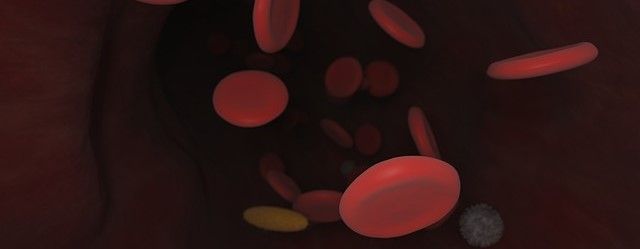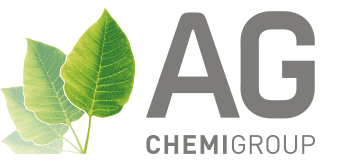Despite being more than 30 years old, there is still some confusion over nanoscience and nanotechnology.
There is even more uncertainty over the value of investing in such an unknown end product.
This need not be the case.

As the financial journal Investing News explains, “In simple terms, nanoscience is the study of nanomaterials and properties, while nanotechnology is using these materials and properties to create a new product.”
And what products they are!
Measuring less than 100 nanometres in size, nanoproducts are some of the world’s most advanced and versatile industrial raw materials. They play a key role in every industry and are attracting ever-larger funding from investors.
To put the nanoscale into perspective, the Science.org website describes how, “10 hydrogen atoms laid side by side measure a nanometre across, a strand of DNA is 2.5 nm in diameter, while a red blood cell is about 7000 nm wide.”

At the nanoscale, materials behave differently to the same material at larger scales.
“These behaviours often defy the classical laws of physics and chemistry,” says the University of Sydney’s Nano Institute, “and can only be understood using the laws of quantum mechanics.”
This means that, elements which are soft in our world, such as gold, can become extremely hard at the nanoscale. Other material properties that can be altered include flexibility, rigidity, electroconductivity, magnetism, transparency, opacity, and strength.
Knowing this, nanomaterial producers can make products such as nanotubes, nanoparticles, nanocones, graphene, or nanorods, which can then be blended in with other materials, so passing on desired qualities to the larger mass.
For example, if a polymer is too rigid, mixing in specific nanomaterials during production could add some needed flexibility.

In other industries, nanoproducts, such as nanowires, can be used to make electrical connections on materials that can measure only a single atom thick. This can not only speed up the transfer rate of electrons but, by working at such a small scale, can enable next generation computing such as quantum computers.
Alternatively, nanomaterials can form a film that is only a few nanometres thick. This can then be applied to provide properties such as antiviral and antibacterial powers for hospital surfaces, reflectivity for the telecommunications industry, light absorbency for solar panels, or for tougher, thinner screens for the electronics sector.
The result is that the nanotechnology industry has practical uses in every single industry: from agriculture, to energy, to coatings, to automobiles, to communications and defence. Every part of the economy is benefitting from the nanomaterial sector.
All of which has been gained in little more than thirty years since the first carbon nanotube was synthesized.
Certainly, analysts believe in the sectors potential and growth prospects.
A recent study by nanotech consultants at IndustryARC, found that the market for nanoproducts was projected to reach almost $122 billion by the year 2025. A market growth rate of 14.3% from 2020.

But knowing all this, how can a wise investor turn this knowledge and opportunity into personal profit?
One route to investment is through an organised market, such as the Integrated Nano-Science & Commodity Exchange. Something the financial journal Investing News describes as, “… a self-regulated commodity exchange” where more than 4,500 nanoproducts can be bought and sold. Items ranging from drug-delivery nanoparticles, graphite, nanowires, CNTs, micron powders, conductive inks, nanofertilizers, and nanopolymers.
Meanwhile, nanotech savvy investors are frequently on the lookout for individual companies which have garnered a nanotechnological edge in any niche market.
As the financial journal Investing News explains, “… nanotech stock options include firms such as NanoViricides (NYSE:NNVC), Nano Dimension (NASDAQ:NNDM) and Sona Nanotech (CSE:SONA).” Adding that, “One popular investment avenue is via graphene, with companies in the space including Applied Graphene Materials (LSE:AGM,OTC Pink:APGMF) and Haydale Graphene Industries (LSE:HAYD).”

Besides stock options and shares, company bonds can also provide a more certain return, by allowing for individual investors to divest their funds into ‘bricks and mortar’ projects with real world products for a specific customer base.
This approach avoids the fluctuations and uncertainties of larger markets and allows for more precise funding of patented methods and committed entrepreneurs.
One such nanotech company is the Prague-based business, AG CHEMI GROUP, a supplier of industrial raw materials since 1994 (who support this website).
During those more than 25 years, the company has formed a number of partnerships with major manufacturers of detergents, ceramics, biodiesel, plastics, chemicals, and fertilizers, not only in Europe but all around the world, growing steadily to achieve an annual turnover of more than €20 million.
However, over the last few years, the company has noticed the increasing demand for nanoproducts.
Understanding this, AG CHEMI GROUP reached out to research institutes in the Czech Republic, Germany, Luxembourg, Russia, and in Ukraine, and helped to develop suitable solutions for improving chemical raw materials using nanotechnologies.

As the company’s CEO and founder Igor Sevcenko explains, “Together with leading European research institutes and in cooperation with nanomaterial manufacturers, we have developed a technology that is currently undergoing a patenting process. At the same time, two pilot production lines are being prepared, focusing on surface and volume structuring of products at the nano level. The first line will be operational by the end of 2020, and we plan to launch the next one during 2021.”
With these goals in mind, the company is issuing a series of bonds available for purchase with highly competitive returns.
If you are interested in learning more about investing in nanotechnology or in buying bonds in a patent holder of nanoproduction processes, then visit: AG CHEMI GROUP.
Photo credit: energepic.com from Pexels, feiern1 from Pixabay, Cassiopeia_Arts from Pixabay, 준원 서from Pixabay, NaMaKuKi from Pexels, AGCHEMIGROUP, & Huebert World from Pexels